Recommendation: Target a waist-to-hip ratio near 0.7. Cross-cultural studies report that many observers prefer that number because it draws interest and makes appearance signal health and fertility. To move the needle: aim for a 5–10% waist reduction over 8–12 weeks with a daily ~500 kcal deficit, two strength sessions per week and 30–45 minutes of moderate cardio three times weekly. This routine does require consistency; handle plateaus by rotating training intensity and logging progress weekly.
Appearance isnt only about measurements – symmetry plays a major role. Facial symmetry, posture and even balanced grooming are factors that others notice quickly. Some cues are fixed, some can be altered: what you can change fast is posture, clothing fit, skin care and smile. Speaking confidently and showing relaxed eye contact amplifies those visual signals; observers tend to prefer people who combine subtle symmetry with approachable behaviour.
Practical checklist: (1) measure waist and hips and track WHR weekly; (2) prioritize compound lifts twice a week to preserve lean mass; (3) tailor clothing to highlight a V-line or narrow waist; (4) work on posture – chest open, shoulders back – to show a confident frame. There are a limited number of modifiable cues of this kind; focus on the 3–5 you can change fastest to maximize draw and lasting interest from others.
Research-backed physical traits men notice first – practical checklist
Measure your waist and tailor garments to create a 0.7 waist-to-hip silhouette; observers register that contour within 3–5 seconds.
heres a concise checklist with concrete actions and timing:
- Silhouette: define the waist–belt, tailoring or fitted fabric; this single adjustment screams proportion and is noticed in under 5 seconds.
- Posture: stand tall with shoulders back and chin level; a confident stand increases perceived fitness and competence almost immediately.
- Hair length: opt for medium-length styles (shoulder to collarbone); medium-length hair balances approachability and maturity, a simple visual cue that works fast.
- Facial expression: maintain a soft smile for 2–4 seconds during initial eye contact; it signals warmth, playfulness and approachability.
- Voice cues: speak with steady pace and slight warmth; lower pitch and measured cadence does increase attention–test by recording 10–15 seconds of conversation.
- Grooming: minimal, high-caliber grooming (clean nails, subtle scent, neat hair) therefore enhances all other features without overpowering them.
- Eye contact: hold direct gaze for 2–3 seconds then release; this rhythm communicates confidence and invites reciprocal interest.
- Movement: small, deliberate gestures and a relaxed gait stand out more than exaggerated motion; fluid movement often registers as sensuality and ease.
- Outfit as statement: choose one statement piece (color, texture, or accessory) that stands out; this lets whats most flattering grow into focus rather than clutter.
- Balance sensuality and playfulness: pair a flattering neckline or sleeve cut with lighthearted accessories; this combo worked repeatedly to elicit positive feelings in observers.
- Proportion over size: emphasize proportionate features rather than concealment; whats proportionate to herself presents authenticity and confidence.
- First 10 seconds: prioritize silhouette, posture and expression–they account for the bulk of first impressions within the first 10 seconds.
- Intentional detail: highlight one facial feature (lips, eyes) and one body feature (waist, shoulders); keeping focus reduces cognitive load and increases memorability.
- Practice presence: rehearsed, natural presence does not feel rehearsed–practice 30 seconds of mindful standing and speaking daily to grow comfort and polish.
Use this checklist to prepare for real interactions: pick two items to refine each week, evaluate what worked, and adjust–basically small, consistent changes compound into a clear, magnetic statement that partners notice.
How to measure your waist-to-hip ratio and select clothing to flatter it
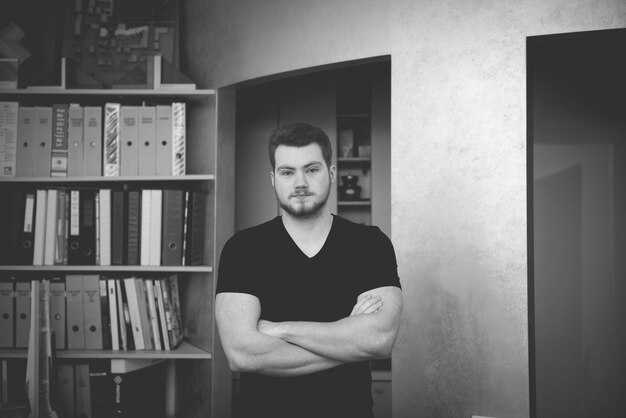
Measure your waist at the narrowest point between ribcage and hips and your hips at the widest part of the buttocks; divide waist by hip (waist ÷ hip = WHR). Use a soft tape, keep it level, breathe normally, and avoid compressing skin. Example: 28″ waist ÷ 40″ hips = 0.70 WHR.
Target benchmarks for styling: about 0.70 ±0.05 is traditionally associated with an hourglass silhouette; 0.75–0.85 is a moderate curve; >0.90 reads as straighter in profile. For WHR ≈0.70, highlight the waist with high-rise jeans, wrap dresses, and belted coats. For WHR 0.75–0.85, create smooth transitions with A-line skirts, slightly tapered trousers, and medium-width belts that align with the natural waist. For WHR >0.90, add visual waist definition with structured blazers, vertical seams, and longline vests to lengthen the torso.
Fit details that better flatter each ratio: choose fabrics that hold shape rather than cling; add darting or princess seams to align panels with your center; use belts a little above the hip for a waist illusion; choose skirts and trousers with balanced pocket placement to avoid widening hips. Patterns vary: small prints and vertical pinstripes slim; bold horizontal bands widen. Tailoring measurements: jacket waist suppression of 2–4 cm can change perceived ratio noticeably.
Face-focused styling helps distribute attention: select necklines (V, scoop, square) that complement your shoulders and face shape, and coordinate hairstyles and makeup–short, stacked haircuts lift the face; long layers soften proportions; a bold lip or expressive eye draws the eye upward. Small accessories near the face (earrings, scarves) are a nice way to align eye-level focal points with your outfit.
Practical handling tips: carry an extra layer (long cardigan or structured coat) to handle days when proportions feel off; use lining and light layers to control cling. Many prefer built-in shapewear panels rather than compressive garments; choose options that match needs for comfort and movement. Reading fit labels (rise, inseam, hip width) helps pick sizes that maintain the ratio you want.
Styling is linked to personal expression: choose cuts and colors that let you feel confident rather than hide. Some people love accentuating curves; others prefer subtler lines – both are valid. Be ready to try a little tailoring; a 1–2 cm hem or side seam adjustment often makes garments align with your proportions better.
Emotional notes: feeling vulnerable about body shape is common and emotionally real; treat changes gradually and test one element at a time (belt, jacket, neckline). Practice that bold choices–bright scarf, tailored jacket–often improve posture and confidence, which in turn alters how clothes read on you.
Quick facial self-checks: evaluate symmetry, lip fullness and eye brightness

Take three straight-on photos at eye level (neutral, smile, slight laughter) from 35–50 cm and perform the checks below immediately.
-
Symmetry – quick measurable checks
- Align a vertical guideline down the philtrum in the photo; measure distance from midline to outer canthus and to mouth corners. Differences under ~2 mm are generally not noticed; 2–4 mm is mild; >4 mm may change overall impression.
- Check eyebrow heights: 2–3 mm difference is common. If asking whether something is wrong, recall small asymmetries are normal and often connected to expression patterns.
- Use a mirror to test dynamic symmetry: smile and laughter–does one side activate more? If one side doesnt move, record a brief video and show to a trusted coach or dentist.
- Why it matters: symmetry draws instinctual attention due to evolutionary signaling; balanced proportions create a more immediate, positive impression.
-
Lip fullness – assess proportions and practical fixes
- Measure vermilion height with a ruler against the photo: a good baseline is ~6–9 mm upper, 8–12 mm lower in frontal view for many adult faces; many people prefer a slightly fuller lower lip.
- Check cupid’s bow symmetry and corner lift: uneven corners change perceived mood; if corners stay down when smiling, practice targeted exercises or consult dental/orthodontic options.
- Non‑invasive adjustments: use a neutral or slightly glossy balm to create shine, wear a lip liner to restore outline, and avoid overfilling–you must aim for subtlety (less is more) so personality and smile remain connected.
- When cosmetic filler is considered: seek a licensed injector, request conservative units, and ask for staged sessions rather than one large session; wrong volume can make lips look disproportionate to medium-length hair or a gorgeous face.
-
Eye brightness – fast checks and simple remedies
- Catchlight test: in a selfie, eyes should show a small specular highlight; absence of shine often indicates low hydration, fatigue, or lighting that flattens expression.
- Sclera check: slight yellowing or redness is visible in photos; if sclera discoloration is present, improve sleep, hydration and see a clinician. Bright eyes often correlate with perceived empathy and approachability.
- Immediate fixes: cold compresses, preservative-free lubricating drops, and a light-reflecting concealer applied under the inner corner will help until lifestyle changes take effect.
- Note: eye brightness doesnt stay without consistent sleep and hydration; coaches next to image work often advise 7–9 hours sleep, reduced alcohol, and blue-light breaks to maintain shine.
Combine checks weekly; small changes in posture, smile practice and how you wear hair (a medium-length side part that goes to the stronger side can mask asymmetry) produce much visible improvement. For functional concerns (bite, nerve palsy) consult specialists–dental and medical input is the main route. A balanced look is connected to personality and lifes routines; modest steps preserve a good, gorgeous appearance while keeping you physically healthy (источник: clinical summaries and image-coaching guidelines).
Simple skin and hair routines backed by studies that improve perceived health
Apply a broad-spectrum SPF 30+ every morning to all exposed skin (roughly a nickel-sized amount for face, reapply every 2 hours outdoors); SPF 30 blocks ~97% of UVB and prevents cumulative damage that leaves skin vulnerable and altered in tone and texture.
Cleanse twice daily with a pH 4.5–5.5 non-foaming formula; choose a moisturizer with ceramides, glycerin and 2–5% niacinamide – this combination treats barrier disruption, truly reduces redness and improves hydration. Use the ingredients table on the product to compare actives; if youre reading labels, prioritize ceramides and sunscreen. Match products to your skin type and keep a simple lineup: cleanser, targeted treatment, moisturizer, sunscreen.
Introduce a retinoid slowly (OTC retinol 0.25–0.5% or prescription options) 1–2 nights/week for the first month, then increase frequency as tolerated; 5–10% AHA once weekly improves texture. High concentrations can provoke irritation, so reduce frequency whenever skin is altered by redness or flaking. Visible changes typically come after 8–12 weeks, though times vary by individual.
Shampoo 2–3 times/week with a sulfate-free cleanser, condition mid-lengths and ends, and use a deep-conditioning mask weekly; limit heat styling to 1–2 times/week and keep dryer/iron on low to avoid breakage. Daily 4–5 minute scalp massage boosts circulation and in small trials has been linked to improved thickness. Clean, conditioned hair draws attention and can attract positive social feedback; neat grooming naturally complements what a womans outfit highlights at the waist and what she chooses to wear wherever she goes.
Sleep 7–8 hours, aim for ~2 L non-alcohol fluids/day, stop smoking and cut excess alcohol – these behaviors improve skin clarity and reduce under-eye shadow. Lighthearted, consistent grooming (trimmed nails, tidy brows) makes you feel and appear real and warm; such small rituals create the feelings that communicate everything is okay and arent a statement of perfection but of care that others find attractive and approachable.
Posture, footwear and camera angles to look taller and more confident
Stand with shoulders back, ribs stacked over hips and chin neutral – this single adjustment typically adds 2–4 cm of perceived height and projects clearer confidence.
Posture mechanics: engage core, squeeze shoulder blades for 2–3 seconds, release; perform wall angels 3 sets of 15, planks 3×45–60s, glute bridges 3×12 twice a week. Hold a doorframe chest stretch 30s daily. Hundreds of consistent reps across weeks strengthen the postural muscles so the upright carry becomes regular rather than effortful (источник: posture protocols shared by clinicians).
Photographic posture: tilt pelvis forward slightly, shift weight to the back leg, extend the front leg straight with toes pointed to create a long silhouette; lift through the sternum while keeping the neck long. Showing that half‑turn (45°) while keeping one shoulder closer to the camera produces a full‑body line that looks taller than square‑on poses.
Footwear rules: choose a stacked heel or concealed elevator adding 2–5 cm (0.8–2 in); pointed or almond toes lengthen the leg line; avoid ankle straps or cropped trousers that cut at the ankle. Match shoe and trouser color to form a continuous vertical column – layers of the same tone read as one long line. Only add chunky soles if they keep the ankle line uninterrupted.
Camera angles and framing: for full‑body shots step back 1.5–3 m and use a focal length equivalent to 50–85 mm to prevent distortion; position the lens 5–10° below eye level (roughly 10–20 cm lower) and angle upward slightly to lengthen legs and torso. On phones, use the rear camera at 1×, step back, then crop rather than shooting close with a wide lens. For headshots, a slightly higher camera can slim the jawline, but to appear taller keep the frame vertical and avoid high, top‑down crops.
| Element | Action | Frequency / Metric | Expected effect |
|---|---|---|---|
| Posture | Wall angels, planks, scapular squeezes | 3×/week; daily 30s stretch | 2–4 cm perceived height, firmer carry |
| Footwear | Stacked heel or insole + pointed toe | 2–5 cm elevation | Longer leg line, steady balance |
| Camera | Lens 5–10° below eye level, 1.5–3 m distance | 50–85 mm equiv.; phone rear 1× | Full‑body elongation, minimal distortion |
| Clothing & pose | Monochrome, vertical seams, weight on back leg | Keep ankle line continuous | Streamlined silhouette |
Social cues that enhance the effect: natural smiles, light laughter and a playful, high-pitched chuckle can make someone seem more approachable while the posture carries authority. Be careful with silly screams or exaggerated reactions – those break composed signals and can undercut the confident look. Showing calm excitement and measured smiles in photos used for dating or profiles signals both approachability and control; having one genuine smile per shoot beats dozens of forced ones. A relaxed, kind expression carries better than tension.
Practical checklist to navigate shoots or first encounters: do a quick posture reset (30s), put on shoes with modest elevation, select clothes with continuous lines or layers in the same hue, set camera slightly low and step back, and deliver a short shared laugh to appear full of ease. This routine underscores small changes that go beyond height alone and makes the whole presentation look better.
Choosing bras, shapewear and silhouettes to accentuate breast and hip curves
Recommendation: choose a balconette or plunge bra with three-part cups and a firm underband to lift and center the bust; the underwire should sit flat against the sternum and cups must contain all tissue without spill or gaping. If the band digs, go one band size up and one cup size down (sister sizing). If you’re curious about projection, opt for 2–3 cm of forward lift from molded or contour cups rather than heavy padding to avoid overly rounded shape that looks artificial during movement.
Shapewear specifics: mid-rise briefs and high-waist shorts in powernet deliver graduated compression: light (10–20%) smooths fabric lines, moderate (20–40%) sculpts waist-to-hip contrast, firm (40–60%) creates measurable cinch – choose firm only for short wear to avoid discomfort or marks. Length to mid-thigh prevents muffin-top and reduces lateral spill; seamless front panels preserve natural hip curves, while silicone waistband keeps garments from leaving roll lines. Replace shapewear if you see fabric tears or permanent sag after 6–12 months.
Silhouettes to amplify curves: fit-and-flare and wrap dresses increase perceived hip volume by 1–3 inches visually; pencil skirts and bodycon sheaths show true hip projection and work best with a defined waist (2–4 inch waist reduction via tailoring or light shapewear). Peplum tops add lateral fullness at hips without adding bulk to the waist. For jackets, choose single-breasted with a nipped-in waist – double-breasted cuts tend to mask curves.
Styling notes: balance is what makes a look stand out. Pair a supportive bra with a top that has vertical darts or princess seams so breasts arent flattened by heavy compression. When wearing strong shapewear, pick softer cup construction so the torso isn’t over-compressed from bra to waist; conversely, when showing off cleavage, smooth hips lightly rather than binding them down. Breathable fabrics (micromodal, cotton blends) improve comfort during long wear.
Context and perception: celebrate the waist-to-hip ratio because biological theories link a 0.7 ratio to higher perceived attractiveness and potential offspring cues; people arent identical in preference, so test what works for your figure. On profiles at marriagecom and similar sites, silhouettes that show posture and waist definition tend to stand out more than tight facial-closeups alone. Partners often notice how clothing moves during conversation and how someone’s posture is supported by undergarments.
Practical checklist: measure band snugly under bust and cup at full breath, test walk and sit for 5–10 minutes in any new bra/shapewear combo, avoid garments that leave red marks or restrict breathing, tailor garments down at the waist for immediate impact, and rotate sets every season to maintain elasticity. If it’s difficult to find the right fit, visit a fitter with samples in multiple styles so you can compare what enhances breasts and hips without looking overstated or losing natural lines.


 8 Physical Traits Men Can’t Resist — Backed by Research">
8 Physical Traits Men Can’t Resist — Backed by Research">

 Can I Be Loved If I Don’t Like Myself? Self-Esteem & Relationships">
Can I Be Loved If I Don’t Like Myself? Self-Esteem & Relationships">
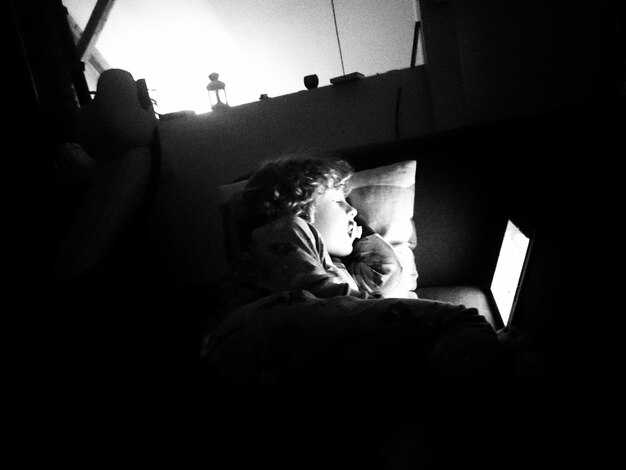 Are We Dating the Same Guy? The Dark Side of Online Groups">
Are We Dating the Same Guy? The Dark Side of Online Groups">
 I Love My Boyfriend but Is It Time to Break Up? 10 Signs & How to Decide">
I Love My Boyfriend but Is It Time to Break Up? 10 Signs & How to Decide">
 Codependency in Relationships – Signs & Recovery Tips">
Codependency in Relationships – Signs & Recovery Tips">
 Needs vs Needy – Understand the Difference in Relationships">
Needs vs Needy – Understand the Difference in Relationships">
 Asymptomatic STIs – What Everyone Needs to Know">
Asymptomatic STIs – What Everyone Needs to Know">
 The True Meaning of Soulmates — Not What You Think">
The True Meaning of Soulmates — Not What You Think">
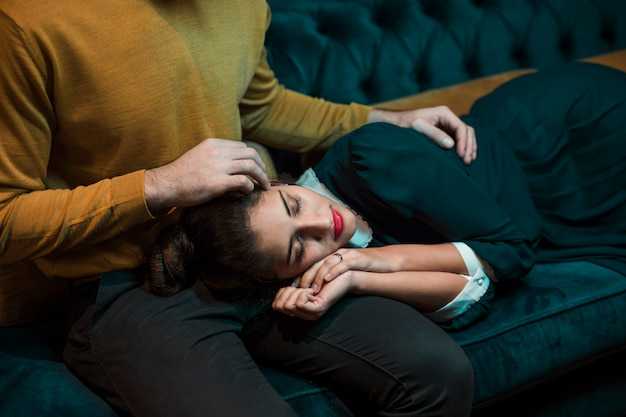 Psychology of Love – Why We Fear Rejection & How to Overcome It">
Psychology of Love – Why We Fear Rejection & How to Overcome It">
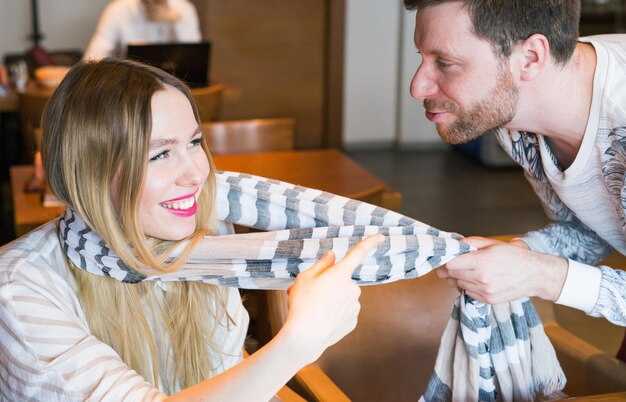 Why You Should Date Someone Who Isn’t Your Type | Benefits & Tips">
Why You Should Date Someone Who Isn’t Your Type | Benefits & Tips">
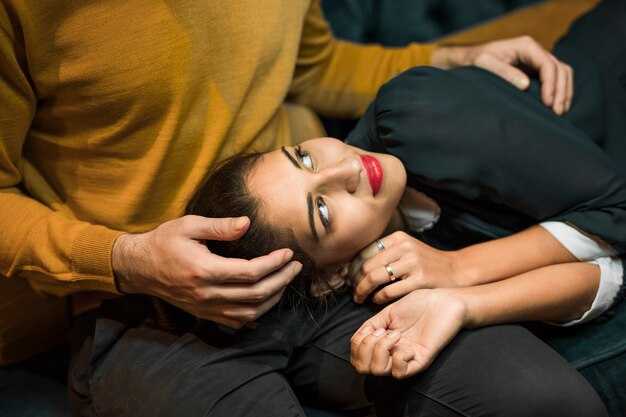 How to Leave a Toxic Relationship in 6 Steps — Safe Guide">
How to Leave a Toxic Relationship in 6 Steps — Safe Guide">